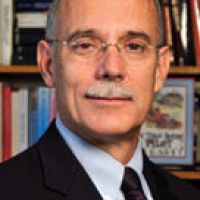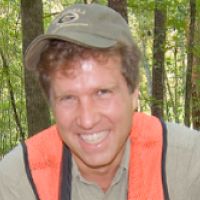Bras et al., 2015
The dependence on topography of the influence of soil erosion and deposition on the carbon cycle at the Calhoun Critical Zone Observatory
Bras, R.; Dialynas, Y.; Billings, S.; Richter, D.; Markewitz, D. (2015)
American Geophysical Union Fall Meeting, December 2015, San Francisco, CA
-
Calhoun, Luquillo, INVESTIGATOR
-
Calhoun, Luquillo, INVESTIGATOR
-
Calhoun, INVESTIGATOR
-
Calhoun, INVESTIGATOR
-
Calhoun, INVESTIGATOR
Abstract
Accelerated soil erosion is an important element of the global carbon (C) cycle. Attempts to quantify the impact of erosion on C budgets are limited by the inability to systematically represent feedbacks between hydrological, geomorphological, and biogeochemical processes. For this purpose we use tRIBS-ECO (Triangulated Irregular Network-based Real-time Integrated Basin Simulator-Erosion and Carbon Oxidation), a spatially-explicit model of SOC dynamics built within a coupled physically-based hydro-geomorphic model. This approach accounts for feedbacks between the watershed’s topography, hydrology, and soil erosion and deposition. Lateral removal of topsoil leads to redistribution of SOC across the landscape, and to alteration of depth-dependent biogeochemical properties within diverse soil profiles. In the proposed framework management practices can have a moderating effect on the oxidation and accretion of SOC at altered soil profiles. Eroded SOC can be oxidized upon transport or stored at depositional sites, in effect mitigating oxidation. We apply tRIBS-ECO to the Holcombe’s Branch watershed in the Calhoun Critical Zone Observatory, a forest that is recovering from some of the most serious agricultural erosion in North America. We simulate the reforestation of the area from prior to the mid-20th century to present. We use measurements of soil moisture and of biogeochemical characteristics at multiple soil horizons. We find that the episodic representation of soil erosion has an important effect on the dynamics of SOC. Our approach demonstrates the extent to which erosion and sedimentation of terrestrial organic C can act either as a sink or as a source of atmospheric C at watershed scale, and emphasizes how the replacement of eroded C by C sequestration depends on topography, which should be explicitly accounted for in regional and global C budgets.
Citation
Bras, R.; Dialynas, Y.; Billings, S.; Richter, D.; Markewitz, D. (2015): The dependence on topography of the influence of soil erosion and deposition on the carbon cycle at the Calhoun Critical Zone Observatory. American Geophysical Union Fall Meeting, December 2015, San Francisco, CA.
 This Paper/Book acknowledges NSF CZO grant support.
This Paper/Book acknowledges NSF CZO grant support.
Explore Further





